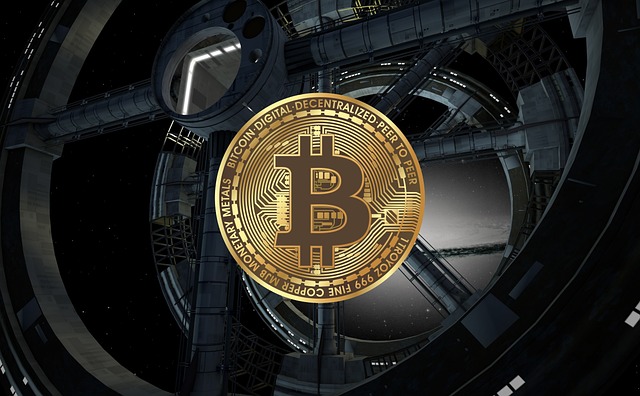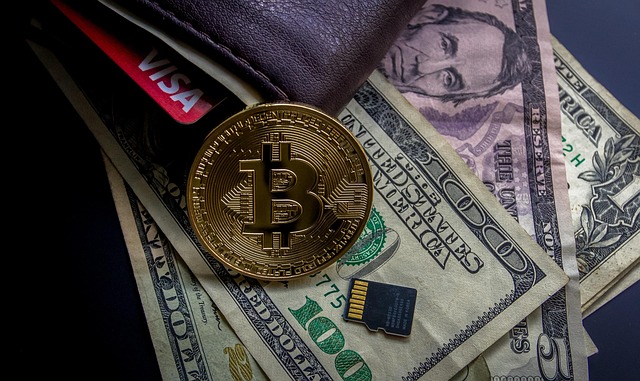4 reasons why Bitcoin price could rally to $90K in April
Key points: Monetary stimulus in China and Europe increases investors’ focus on Bitcoin price.The US Federal Reserve is under political pressure to cut rates, as the DXY weakens.Bitcoin’s decoupling from traditional markets continues to gain attention. Bitcoin (BTC) traders are somewhat puzzled by BTC price jumping to $85,000, especially since the S&P 500 index has dropped 5.7% in April, and this move came after the cryptocurrency managed a 14% rebound off its trade-war induced crash to $74,400. Investors are cautiously optimistic, but multiple events and data points to further gains above $90,000.Several metrics and events support a “decoupling,” meaning Bitcoin’s price is not closely following traditional financial instruments. However, some skepticism emerges as BTC has not matched gold’s performance. Gold reached an all-time high of $3,358 on April 16, leading to speculation that governments and central banks are increasing their gold reserves.Global stimulus rises as US economy shows early weaknessAs central banks respond to the threat of an economic recession, the chances of an increase in monetary supply are rising. While the US Federal Reserve (Fed) has held off on lowering interest rates or expanding its balance sheet, other nations have already taken such steps. This puts more pressure on the US economy, which is starting to show signs of weakness.US Federal Reserve total assets, USD million. Source: St Louis FedIn China, new bank loans in March rebounded more than expected to $500 billion, over 20% higher than analysts had predicted and a strong recovery from the previous month’s decline. According to Reuters, the PBOC has promised to increase stimulus measures to reduce the impact of the trade war with the United States.On April 17, the European Central Bank cut interest rates for the seventh time in a year to support the eurozone economy. The ECB has lowered the cost of capital to its lowest level since late 2022. Several investment banks have also reduced their inflation forecasts for the region, as the tariff war could reduce the region’s gross domestic product by 0.5%, according to Reuters.Weaker US dollar and Bitcoin miners’ long-term commitmentFurther adding pressure on the US Federal Reserve to end its restrictive monetary policy is the weakening of the US dollar compared to major global currencies, as the DXY Index has dropped to its lowest level in three years. A weaker dollar usually helps exports, which can be positive for the current account balance, but this is unlikely to last during a trade war.US Dollar Index (DXY). Source: TradingView / CointelegraphInvestor confidence has also been hurt by US President Donald Trump’s public criticism of Fed Chair Jerome Powell’s administration. This situation makes it harder for the US Treasury to rely on issuing Treasurys to stay afloat, which further weakens the US dollar. President Trump even said that Powell’s removal “cannot come fast enough,” while also calling for lower interest rates.However, when looking at the current macroeconomic data, there is little reason to support a more relaxed monetary policy from the US Fed, especially after the latest US jobless claims reported on April 17. Initial claims fell by 9,000 to 215,000 in the week ending April 12, according to the US Labor Department. Powell repeated on April 16 that the labor market is in a “solid condition,” according to Reuters.Related: When gold price hits new highs, history shows ‘Bitcoin follows’ within 150 days — AnalystBitcoin 7-day average estimated hashrate. Source: Blockchain.comBitcoin miners have also shown a strong long-term commitment, as the hashrate increased by 8% compared to the previous month. Since the Bitcoin halving in April 2024, traders were worried that lower profits would cause many miners to leave, possibly leading to a sell-off, since miners reportedly hold almost 1.8 million BTC, according to Glassnode.This article is for general information purposes and is not intended to be and should not be taken as legal or investment advice. The views, thoughts, and opinions expressed here are the author’s alone and do not necessarily reflect or represent the views and opinions of Cointelegraph.
When gold price hits new highs, history shows ‘Bitcoin follows’ within 150 days — Analyst
The price of gold surged to a new all-time high of $3,357 per ounce on April 17, igniting speculation on whether Bitcoin (BTC) would follow. Bitcoin-gold comparison. Source: Cointelegraph/TradingViewIn 2017, Bitcoin rallied to $19,120 after gold witnessed a 30% hike a few months earlier. Similarly, gold reached a new high near $2,075 in 2020 during the COVID-19 pandemic, which preceded Bitcoin’s surge to $69,000 in 2021.Bitcoin has historically surpassed its previous all-time highs whenever gold rallies, reflecting a dynamic relationship between the two assets during periods of economic uncertainty and when investors look for a US dollar alternative.Further highlighting the interconnections between the assets, Joe Consorti, head of growth at Theya, pointed out that BTC follows gold’s directional bias with a lag of 100-150 days at a time. Consorti said, “When the printer roars to life, gold sniffs it out first, then Bitcoin follows harder.”Bitcoin vs gold price movement correlation. Source: X.comConsidering Consorti’s view, Bitcoin is expected to potentially attain new all-time highs between Q3 and Q4 of 2025. Anonymous Bitcoin proponent apsk32 expected a similar outcome or bullish period between July and November. Looking at data from past Bitcoin price cycles and BTC’s “power curve time contours,” the analyst predicted that Bitcoin will enter a parabolic phase in the latter half of 2025, with a price target as high as $400,000. Using the power law model, the analyst normalized Bitcoin’s market cap to gold’s and plotted BTC on a logarithmic scale, measuring each Bitcoin in ounces of gold instead of dollars.Bitcoin price and power curve chart. Source: X.comRelated: Bitcoin gold copycat move may top $150K as BTC stays ‘impressive’Bitcoin trading like “Mag 8” amid tariff uncertaintyIn a recent interview with CNBC, Galaxy Digital CEO Mike Novogratz said that Bitcoin and gold are “key indicators of financial stewardship” amid global macroeconomic uncertainty. Highlighting it as a “Minsky Moment” for the US economy, Novogratz said that Bitcoin thrives in market turbulence, driven by a weakening US dollar and capital flowing into safe havens like gold, which has recently rallied. Novogratz added that despite a 10% year-to-date drop in equities, markets underestimate the scale of global economic shifts, with tariffs and Trump’s policies adding uncertainty. He cautioned that rising interest rates and a weakening dollar signal the US is behaving like an emerging market, with Bitcoin and gold reflecting growing concerns over unsustainable deficits and the $35 trillion national debt.Related: Bitcoin online chatter flips bullish as price chops at $85K: SantimentThis article does not contain investment advice or recommendations. Every investment and trading move involves risk, and readers should conduct their own research when making a decision.
Digital Currency Group CEO Barry Silbert says he should have just held BTC
Barry Silbert, the CEO of Digital Currency Group, said he would have secured higher investment gains by just holding the Bitcoin that he invested in early-stage crypto projects around 2012.During an April 17 appearance on Raoul Pal’s Journey Man podcast, Silbert said he discovered Bitcoin (BTC) in 2011, purchasing BTC at $7-$8 per coin. Once the price of BTC surged, Silbert started looking for early-stage crypto companies to invest in. The executive told Raoul Pal:”I was using Bitcoin to make a bunch of those investments, and you would think, if you invested in Coinbase you would have done really well. Had I just held the Bitcoin, I actually would have done better than making those investments.”Silbert’s comments come at a time when Bitcoin maximalists, including Strategy co-founder Michael Saylor, forecast a seven-figure Bitcoin price in the coming decade, and BTC receives greater attention from governments worldwide.Bitcoin price history 2011-2025. Source: CoinMarketCapRelated: Bitcoin gold copycat move may top $150K as BTC stays ‘impressive’Bitcoin could hit $1 million if US begins buying BTC Zach Shapiro, the head of the Bitcoin Policy Institute (BPI) think tank, recently predicted BTC would hit $1 million per coin if the United States government were to purchase 1 million BTC.“If the United States announces that we are buying a million Bitcoin, that’s just a global seismic shock,” Shapiro told Bitcoin Magazine in an April 16 podcast appearance.Bo Hines, the executive director of President Trump’s White House Crypto Council, signaled that the council is exploring several budget-neutral strategies for acquiring more Bitcoin for the US Strategic Reserve.These strategies included revaluing the US Treasury’s gold reserves, which are currently priced at $43 per ounce while the market rate is at an all-time high of $3,300 per ounce, and funding Bitcoin acquisition through trade tariffs.BTC has been floated as a way to eliminate or alleviate the growing national debt by President Trump and several market analysts.According to asset management firm VanEck, Bitcoin could help claw back the $36 trillion national debt by $14 trillion if the US Treasury introduces long-term bonds with BTC exposure.Magazine: TradFi fans ignored Lyn Alden’s BTC tip — Now she says it’ll hit 7 figures: X Hall of Flame
Cash-based crypto can enable financial inclusion for billions
Opinion by: Alexander Guseff, founder and CEO of TectumCrypto companies have spent years pushing digital wallets and exchange apps, convinced they’ll bring financial inclusion to the world. Here’s the reality: 1.4 billion people remain unbanked, and crypto adoption has barely exceeded 8%. For all the talk about decentralization and accessibility, the industry continues to overlook the billions of people who rely on cash for their daily lives.In developing economies of Africa, South Asia and Latin America, cash is not just dominant — it’s essential. Banking services are sparse, smartphone penetration is low, and digital literacy remains a hurdle. Expecting these populations to onboard through a process designed for tech-savvy users with internet access is unrealistic.Yet whenever offline crypto solutions have been tested, adoption has jumped. The message is clear: People are willing to use crypto but need a way to access it that fits their reality.The global reality of cash dependenceDespite assumptions that digital finance will eventually replace cash, that’s not what the numbers show. Take Romania. Notably, 76% of transactions there are still cash-based, yet crypto adoption has hit 14%. In Morocco, cash remains king despite digital payment growth, yet 16% of the population has found a way to use crypto — even though it’s officially banned.Then there’s Egypt, where approximately 72% of payments rely on cash, but crypto adoption sits at around 3%, primarily due to limited digital infrastructure. Even in India, where crypto enthusiasm runs high, 63% of transactions still happen in cash. Across these markets, the pattern is clear: People want to use crypto, but the industry isn’t giving them a practical way to integrate it into their everyday transactions.Crypto’s real problemThe barriers to crypto adoption go far beyond technology. Government regulations, economic conditions and local financial habits all play a role. Crypto’s biggest flaw isn’t a lack of demand. It’s the assumption that digital wallets and banking apps are the only viable entry points. That thinking ignores billions of people who still operate in cash-driven economies.A more practical approachInstead of forcing a digital-only model onto cash-heavy regions, crypto should adapt. Blockchain-linked physical banknotes, QR-coded vouchers and SMS-based transfers could bring crypto into the real economy in a way that makes sense for people who already use cash.Recent: Stop making crypto complexThe idea isn’t as radical as it sounds. Africa’s M-Pesa, which has over 66.2 million active users, operates on a simple agent-based model that lets people exchange cash for digital value without needing a bank account. The same approach could work for crypto, enabling users to trade blockchain-linked cash notes at local vendors.It’s already happening in small pockets. Machankura, for example, enables Bitcoin transactions via basic mobile networks, attracting over 13,600 users in Africa. In a region where nearly all digital payments rely on simple mobile codes rather than smartphone apps, solutions like this are far more viable than pushing another exchange-based onboarding process.Security concerns will always come up with physical assets, but trained agents and proper oversight can mitigate risks. More importantly, that’s a solvable problem — excluding billions of people from the financial system isn’t.The digital purists get it wrongMany in the crypto space dismiss paper-based solutions as outdated. The idea that everything must be digital ignores how financial systems evolve. People need time to transition and systems that fit their current way of life.CoinText, an SMS-based crypto transfer service, spread to 50 countries before it shut down — not because the idea didn’t work, but because the industry wasn’t ready to support it. The same rigid thinking that dismissed SMS transfers is now preventing adoption in cash-heavy economies. A new service called Text BSV has emerged, enabling seamless peer-to-peer (P2P) payments of satoshis via SMS — no app downloads, registrations or prior knowledge of Bitcoin (BTC) is required. It works on any phone, even non-smartphones.If crypto adoption remains stalled at 8%, it won’t be because people don’t want it. It’ll be because the industry insisted on an approach that doesn’t work for most of the world.A $50-billion opportunity The financial upside of integrating crypto into cash economies is enormous. Similar markets could follow if Romania, with a 76% cash reliance, can reach 14% adoption. That translates into a $50-billion opportunity globally as crypto enters economies where trillions of dollars move in informal cash transactions every year.A network of cash-to-crypto agents could generate $10 billion in revenue by 2030, mirroring the success of mobile money platforms like M-Pesa. Even crypto exchanges would benefit from tapping into these underserved markets, bridging the gap between digital and cash economies.Regulators may hesitate at paper-based crypto owing to transparency concerns, but financial inclusion at this scale is hard to ignore. If governments see a potential $50 billion in new economic activity, they’re more likely to work toward solutions rather than block progress.Cash meets cryptoCrypto was supposed to revolutionize financial access, but it remains out of reach for billions of people. Expecting these communities to abandon cash entirely and jump straight into digital wallets is unrealistic and a bad strategyThe solution isn’t to wait for these economies to modernize. It’s to meet people where they are. That means experimenting with cash-compatible solutions, partnering with telecom providers, and rolling out agent-based models that let people use crypto in a way that feels familiar.The current adoption stall will become permanent if the industry doesn’t make these changes. Instead of a step backward, paper-based crypto could be the bridge that finally connects billions of people to the future of finance.Opinion by: Alexander Guseff, founder and CEO of Tectum. This article is for general information purposes and is not intended to be and should not be taken as legal or investment advice. The views, thoughts, and opinions expressed here are the author’s alone and do not necessarily reflect or represent the views and opinions of Cointelegraph.
Securitize manages $38B with acquisition of MG Stover admin business
Tokenization company Securitize has expanded its digital asset operations by acquiring MG Stover’s fund administration business, in a move the company said has significantly grown its assets under management and ability to serve institutional clients.With the acquisition, MG Stover’s fund administration business has been absorbed into Securitize Fund Services, Securitize’s wholly owned subsidiary, the company disclosed. Securitize Fund Services now manages more than $38 billion in assets across 715 funds. Founded in 2007, MG Stover offers full-service fund administration spanning traditional financial industries like hedge funds, venture capital and private equity, as well as digital asset funds. A Securitize spokesperson informed Cointelegraph that the acquisition pertains only to MG Stover’s fund administration business and not the company as a whole.In an emailed statement to Cointelegraph, Securitize co-founder and CEO Carlos Domingo said, “The MG Stover acquisition significantly strengthens our institutional offering by adding one of the most experienced digital asset fund administration teams in the industry to Securitize Fund Services.” He continued:“Legacy fund administrators were never designed for the speed, complexity, or global reach of digital assets. Their systems struggle with the pressure of 24/7 markets, and they weren’t built to handle stablecoin flows or real-time settlements.”Securitize is one of the largest real-world asset (RWA) tokenization companies, having issued more than $3.3 billion in onchain assets, most notably the BlackRock USD Institutional Digital Liquidity Fund, also known as BUIDL.BUILD currently has nearly $2.5 billion in assets, according to industry data. BUIDL leads the booming market for tokenized US Treasurys. Source: RWA.xyzRelated: VC Roundup: 8-figure funding deals suggest crypto bull market far from overTokenization market heats upTokenized RWAs are a rapidly expanding segment of the blockchain industry, attracting both traditional investors and crypto-native users. RWA growth has defied the broad downtrend in the cryptocurrency market, with the total value of onchain financial assets surging 11.2% to $21 billion over the past 30 days, according to RWA.xyz.Amid the tokenization wave, Securitize recently partnered with Ethena Labs to create a new blockchain for the RWA economy. The forthcoming Converge blockchain will allow retail and institutional investors to access tokenized assets and decentralized finance applications. Meanwhile, the Mantra blockchain recently unveiled a $109 million ecosystem fund to bootstrap startups building across the RWA and DeFi economies. Related: Bitwise makes first institutional DeFi allocation
Bitcoin tipped for 2023-style rebound as Goldman says dollar 'overvalued'
Bitcoin (BTC) centered on $84,000 at the April 16 Wall Street open amid hopes that a weak US dollar would fuel a bull market comeback.BTC/USD 1-hour chart. Source: Cointelegraph/TradingViewBitcoin analysis calls for 2023 rally repeatData from Cointelegraph Markets Pro and TradingView showed BTC/USD consolidating after a swift comedown from local highs the day prior.That volatility had accompanied ongoing developments in the US-China trade war, with crypto and risk assets staying sensitive to headlines and statements from parties such as US President Donald Trump.The S&P 500 and Nasdaq Composite Index traded down 1.4% and 2.2%, respectively, at the time of writing.Gold remained the standout winner, having set new all-time highs above $3,300 per ounce on the day.“Unlike gold, BTC has not caught a safe-haven bid,” trading firm QCP Capital summarized in its latest bulletin to Telegram channel subscribers. “The ‘alternative store of value’ narrative isn’t gaining traction in the current macro regime. Positioning remains defensive. Participants are still focused on hedging their downside until greater clarity emerges.”Gold/USD price 1-hr candle chart. Source: Cointelegraph/TradingViewLooking for potential tailwinds, market participants focused on the US dollar’s inability to reclaim prior support after sliding precipitously as the trade war took hold.The US dollar index (DXY) hovered near multiyear lows after rejecting at the psychologically significant 100 mark.US Dollar Index price 1-hr candle chart. Source: Cointelegraph/TradingView“DXY is dropping at its fastest pace since 2023,” popular trader BitBull told followers in a post on X.BitBull drew comparisons to BTC price performance from the time, with early 2023 seeing Bitcoin and altcoins emerge from the pit of the 2022 bear market.“Back then, $BTC had already bottomed (Q4 2022) and went on to rally 200%+ within a year,” he continued.“I guess it’s time for btc to repeat the 2023-24 rally.”Source: X/@AkaBull_Andre Dragosch, European head of research at asset management firm Bitwise, meanwhile flagged Goldman Sachs research seeing further DXY downside to come.“NOTE: US Dollar is still significantly overvalued according to GS,” he commented alongside a Goldman chart of dollar strength versus US growth performance. “Lots of room for USD depreciation = upside potential for BTC to re-rate.”Source: X/@Andre_DragoschBTC price gives cautious bullish hintsBitcoin traders eyed various positive chart signals on the day, with these including a potential bottom formation on the 4-hour chart.Related: Can 3-month Bitcoin RSI highs counter bearish BTC price ‘seasonality?’“Forming an Inverse Head & Shoulders Pattern on the 4H timeframe, if we manage to hold a Higher Low in the coming days,” popular trader Luca suggested.Source: X/@MirageMogulCrypto trader, analyst and entrepreneur Michaël van de Poppe hoped for a fresh retest of resistance, for him one of two key areas of interest.“Bitcoin is still nicely consolidating between the two levels,” he concluded. “The test at $87K did happen, and I think that we’ll see a big breakout once we’ll retest it again. What’s next? Likely a run to ATH at the end of this quarter.”Source: X/@CryptoMichNLThis article does not contain investment advice or recommendations. Every investment and trading move involves risk, and readers should conduct their own research when making a decision.
Chipmaker stocks slide as Nvidia faces $5.5B charge with US restrictions
Chipmaking giants Nvidia and AMD have seen their share prices slide in after-hours trading after Nvidia said US restrictions on artificial intelligence chips to China would cause it to face major costs.Nvidia stated in an April 15 regulatory filing that it is expecting around $5.5 billion in charges associated with its AI chip inventory due to significant export restrictions imposed by the US government affecting the company’s business with China. Nvidia said that the US government informed it on April 9 that export licenses are now required for its popular H20 integrated circuits and any chips with similar bandwidth capacity.“First quarter results are expected to include up to approximately $5.5 billion of charges associated with H20 products for inventory, purchase commitments, and related reserves.”The restrictions specifically mention China, Hong Kong and Macau, and the government indicated that the license requirement “addresses the risk that the covered products may be used in, or diverted to, a supercomputer in China.” The H20 is the most advanced AI chip Nvidia can export to China under previous export rules. Government officials have been calling for stronger export controls on the chip, which was reportedly used to train models from China-based AI startup DeepSeek. The Trump administration initially put the restrictions on hold following President Donald Trump’s meeting with Nvidia CEO Jensen Huang earlier this month, NPR reported. Related: Nvidia’s stock price forms ’death cross’ — Will AI crypto tokens follow?On April 14, Nvidia announced that it would spend hundreds of millions of dollars over the next four years manufacturing some AI chips in the US. However, that has not prevented the stock slump in light of the latest filing and predicted impact on its upcoming revenue report. “Truly no company is safe from tariffs,” commented the Kobeissi Letter. Nvidia’s first quarter of fiscal year 2026 ends on April 27.Nvidia, AMD stocks slump after hours Shares in Nvidia (NVDA) fell 6% in after-hours trading on April 15 to $105, according to Google Finance.Nvidia’s share price is down 22% so far this year, slumping in a wide market rout caused by Trump’s escalating trade war and tariff threats. NVDA price tanks in after-hours trading. Source: Google FinanceRival chipmaker Advanced Micro Devices (AMD) saw a similar share price drop, falling more than 7% to $88.55 in after-hours trading. AMD shares have declined by more than 25% since Jan. 1. Magazine: Illegal arcade disguised as … a fake Bitcoin mine? Soldier scams in China: Asia Express
Aztec launches StealthNote app giving privacy to corporate whistleblowers
Developers behind the Ethereum layer 2 Aztec Network have launched a whistleblowing platform called StealthNote that allows workers to vent about their employer without revealing themselves.StealthNote uses zero-knowledge proofs to prove that posts on its platform are written by someone with access to an email address of the company that they’re reviewing.Aztec Labs developer Saleel Pichen wrote in an April 14 X post that StealthNote creates a zero-knowledge proof of a Google JSON Web Token, which is used to authenticate users and allows the platform to prove a poster owns “an email from a company domain without revealing any personal info.”Two of the latest posts on StealthNote from personnel at Aztec Labs and Cornell University. Source: StealthNote.xyzAccording to Aztec’s documentation, the privacy solution had been in development since at least Oct. 22, while the first test post from Aztec occurred about three months ago.Workers from Ethereum Foundation, StarkWare and Scroll as well as Columbia and Cornell universities have made posts on StealthNote, primarily sharing greetings and voicing their support for privacy solutions.“Let’s make privacy cool again,” a worker from Nim Network wrote.ZK-proofs needed more than ever, says ButerinZK-proofs have become an increasingly used privacy solution in the internet age as concerns over data security and government surveillance continue to grow.The concerns were raised in an April 14 blog post by Ethereum co-creator Vitalik Buterin, who criticized the assumption that governments are generally well-intentioned when it comes to sacrificing privacy for a more “transparent society.” Related: Vitalik Buterin unveils roadmap for Ethereum privacyHe championed ZK-proofs as a solution to mitigate this trade-off, highlighting the technology’s ability to provide “fine-grained control of who can see what information.”Related: Vitalik Buterin unveils roadmap for Ethereum privacyThe privacy-focused Aztec Network launched on Ethereum in February 2020. The firm raised $100 million in Series B funding led by the tech-focused venture capital firm Andreessen “a16z” Horowitz in December 2022, with A Capital and King River also contributing.Magazine: Financial nihilism in crypto is over — It’s time to dream big again
Can you really buy anything with Pi coin? Find out here!
Key takeawaysPi coin finally went live on open mainnet in February 2025, unlocking real-world use cases after years in closed beta.You can spend Pi coin, but mostly within P2P communities and KYC-verified Pi apps — mainstream adoption is still in its early stages.Pi is now tradable on several CEXs, such as OKX, Bitget and MEXC, but Binance still hasn’t listed it despite 2 million+ user voters lobbying for the listing.Merchant adoption is growing slowly, with real goods and services being exchanged for Pi in localized markets and app-based ecosystems.Often described as a crypto for the people, Pi is a decentralized project that runs without the need for GPUs or gas fees. But five years since its closed mainnet launch in 2021, the million-dollar question still hangs in the air: Can you actually buy anything with Pi coin in 2025?Let’s dive into the Pi Network’s real-world usability and answer what every Pi miner and curious crypto observer is wondering: Does Pi coin work in real life, or is it still just theoretical digital dust?What is Pi coin, and what’s driving the attention around it in 2025? Launched in March 2019 by a trio of Stanford Ph.D.s — Nicolas Kokkalis, Chengdiao Fan and Vincent McPhillip — the Pi Network set out to solve one of crypto’s core problems: accessibility. Unlike Bitcoin or Ethereum, which require specialized hardware to mine, Pi coin was designed to be mined directly from a smartphone, without draining battery or data. The idea? Democratize crypto from the palm of your hand.The Pi Network quickly went viral, spreading through invitation-only mining that created a sense of exclusivity and social virality. By 2021, the app had surpassed 20 million engaged users, or “Pioneers,” and by late 2023, that number had reportedly hit 47 million, making it one of the largest pre-mainnet crypto communities in the world.Here’s a quick timeline of key moments:March 2019: The Pi Network launches a beta version of its app on Android and iOS.2020–2021: User growth accelerates through referrals; Pi phases move toward testnet. December 2021: Closed mainnet goes live; Pi transactions remain within the ecosystem. 2022–2024: Over 100 Pi apps are built for testing in the closed economy.February 2025: Pi Network officially launches its open mainnet, enabling blockchain interaction with the outside world. This long-awaited mainnet move opened the doors for Pi (PI) coin to be listed on centralized exchanges (CEXs) and used outside its sandbox — finally bringing the project closer to its goal of becoming a real digital currency for everyday use.From an ambitious student project to one of the most downloaded crypto apps ever, Pi Network’s journey has been anything but ordinary. But now that the tech is live and tradable, the big question is: Can you actually use Pi coin to buy things?Did you know? Over 2 million users voted for Binance to list Pi coin — and yet, Binance has remained completely silent. Despite Pi Network boasting 47 million users and a fully launched mainnet, the world’s biggest exchange hasn’t budged. Why? Some say it’s a lack of decentralization. Others point to the controlled KYC rollout. Either way, it’s a reminder that in crypto, even a viral army can’t force the gatekeepers to open the doors.Where can you buy Pi coin in 2025?Following the launch of Pi Network’s open mainnet in February 2025, Pi coin has become available for trading on several cryptocurrency exchanges. As of April 2025, Pi coin is listed on the following exchanges:OKX: One of the first to list PI, offering trading pairs such as PI/USDT.Bitget: Provides PI trading with liquidity and user-friendly interfaces.MEXC: Another early adopter, supporting PI trading pairs.BitMart: Supports PI trading, though some listings may be IOUs.HTX (formerly Huobi): Has listed PI, though it’s based on IOU listings.Despite community efforts, including over 2 million votes in favor, Binance has not listed Pi coin as of April 2025. Concerns over blockchain compatibility, transparency and regulatory issues have been touted as reasons for the hesitation.Did you know? Many Pi coin listings on exchanges are actually IOUs, which is not the real deal. These “I Owe You” tokens are speculative placeholders that aren’t backed by mainnet Pi, meaning you can’t withdraw or use them within the Pi Network ecosystem. It’s like trading a movie ticket for a film that hasn’t even premiered yet. Always check whether you’re buying the actual PI token or just a promise.What can you actually buy with Pi coin?Here’s where things get real (or not so real). While you might not be buying a Tesla with Pi (yet), the Pi community has been documenting purchases such as:T-shirts, mugs and phone accessoriesFreelance graphic design servicesBasic electronics and gadgetsFood, drinks and small restaurant meals (in localized Pi events)Handmade crafts and collectibles.The catch? Most of these transactions happen via social media groups, Telegram chats or Pi’s own ecosystem apps such as Pi Browser and Pi Chat. These platforms act as informal marketplaces, often relying on trust and reputation rather than formal escrow systems.So, while Pi isn’t quite ready for prime time in major retail environments, it is functioning — in a grassroots, community-driven way. Think of it more as a barter system with crypto flair than a fully integrated payment network. For now, at least.Pi Network merchant list — fact or fiction?If you search “Pi coin accepted stores” on Google, hoping for a list of your favorite retailers, you’ll be disappointed.There is no official Pi Network merchant list that guarantees where Pi is accepted. Instead, adoption is grassroots and highly localized. One group of Pi Pioneers in Indonesia might be able to buy food with Pi, while another in Vietnam uses it for mobile data top-ups. But it’s hard to track, standardize or verify.Merchant adoption is still early — but gaining traction.Now that Pi Network’s open mainnet is live, the conversation is no longer about “if” Pi will integrate with the broader crypto ecosystem — it’s about how fast it can onboard real merchants and use cases.One promising trend is the rise of Know Your Customer (KYC)-verified Pi apps, platforms that require users and businesses to complete identity verification before participating in the Pi economy. This layer of trust helps Pi Network build a more legitimate commercial environment, where merchants feel more confident accepting Pi coin as payment.In the months following the open mainnet launch, Pi Network’s developers and community have focused on scaling real-world integrations, which include:Local businesses in countries such as Nigeria, Vietnam, Indonesia and the Philippines accept Pi for goods and services. Pi Chain Mall and other marketplaces are enabling digital commerce in Pi. Third-party integrations are being tested to connect Pi with decentralized finance (DeFi) protocols, crosschain bridges and non-fungible token (NFT) platforms. Pi Browser and Pi Apps allow decentralized application (DApp) developers to launch new payment-enabled services using mainnet Pi.With over 100 Pi apps already built during the testnet phase — and a global army of KYC-verified users — Pi Network now has the tools to grow a real, scalable economy. Whether that turns into a bustling merchant network or a niche payment layer depends on what the community builds next.With that said, there’s growing interest in onboarding merchants through KYC-verified Pi apps, hinting at a slow but potentially scalable adoption model.Now with the open mainnet live, Pi is also expected to launch integrated DeFi protocols, decentralized exchanges (DEXs) and NFT marketplaces. If these integrations succeed, serious use cases beyond the Pi bubble could be unlocked.Did you know? During PiFest 2025, over 1.8 million users engaged in transactions using Pi coin across 58,000 active merchants worldwide. This event showcased Pi Network’s growing real-world adoption and its potential to facilitate everyday commerce.Is Pi coin ready for real-world payments?Let’s be honest: Pi coin isn’t a Visa killer at the moment. It’s not ready to power global commerce or even compete with Bitcoin in El Salvador. However, it serves as a testbed for what crypto payments might look like when driven by community trust rather than institutional backing.Think of it less like a universal payment tool and more like a local barter system on crypto steroids.If the Pi Network nails its open mainnet rollout and expands merchant onboarding with real compliance and liquidity support, 2025 could mark the moment Pi goes from playful experiment to actual contender.Final verdict: Can you buy stuff with Pi coin?Yes — but with limitations.You can spend Pi coin, but only in select peer-to-peer (P2P) markets, community-driven stores or pilot programs run by Pi Pioneers. Most of it is still happening in closed circuits, with no large-scale merchant integration yet.But is that really a problem?Maybe not. After all, the early days of Bitcoin weren’t much different — experimental, niche and often dismissed.Back then, buying a pizza with Bitcoin (BTC) was groundbreaking. Now, BTC sits in exchange-traded fund (ETF) portfolios and corporate treasuries.Whether Pi Network breaks through or fades into obscurity depends on what happens next: regulatory clarity and whether the network can scale beyond its internal community.Believer or skeptic, one thing’s certain: The real-world test of the Pi Network economy is just getting started — and the world is watching.
Can 3-month Bitcoin RSI highs counter bearish BTC price 'seasonality?'
Bitcoin (BTC) demands a breakout as a key leading indicator reaches its highest levels since January.Data from Cointelegraph Markets Pro and TradingView shows the relative strength index (RSI) hinting at more BTC price gains next.Bitcoin RSI breakout has days to “full confirmation” Bitcoin bull runs traditionally begin with telltale RSI signals, and on daily timeframes, conditions are ripe for a classic BTC price rebound.As BTC/USD made lower lows over the past month, RSI began trending in the opposite direction, setting higher lows and attempting a type of bullish divergence.More recently, the daily RSI broke above the 50 midpoint, only to successfully retest it as support from above before making new multimonth highs.BTC/USD 1-day chart with RSI data. Source: Cointelegraph/TradingViewAmong those monitoring the topic is popular trader and analyst Rekt Capital.“Bitcoin has successfully retested red as support & the Daily RSI Higher Low continues to maintain itself as well,” he commented alongside a chart in an X post this weekend.“Growing signs of a maturing Bullish Divergence here, with price just below the key Price Downtrend (blue).”BTC/USD 1-day chart with RSI data. Source: Rekt Capital/XRekt Capital also reported that RSI trends suggested a long-term BTC price floor at around $70,000.Meanwhile, fellow analyst Kevin Svenson captured similarly promising signals on weekly RSI this week.“Once confirmed, weekly RSI breakout signals have proven to be among the most reliable macro breakout indicators,” he told X followers. “6 Days until full confirmation.”BTC/USD 1-week chart with RSI data. Source: Kevin Svenson/XAs Cointelegraph reported, another key breakout currently under the microscope for Bitcoin market participants involves a downward-sloping trendline in place since January’s all-time highs.April BTC price performance far below medianCountering the bullish anticipation is an analysis focusing on the troublesome macroeconomic conditions in which Bitcoin now finds itself.Related: Bitcoin price metric that called 2020 bull run says $69K new bottomThe ongoing US trade war and risk-asset rout make for an unlikely influx of capital to BTC, which has closely followed stocks while gold sets repeated all-time highs.In his latest forecast for April, network economist Timothy Peterson saw little reason to celebrate.Uploading a chart of the median yearly price path for BTC/USD, he concluded that this year was a firm underperformer.“Half the days are above the blue line and half are below it. This April is obviously a ‘below’ month,” part of accompanying commentary read.“That is almost certainly not going to change, given the level of interest rates and other risk factors at work in the market and economy.”BTC price seasonality. Source: Timothy Peterson/XOther perspectives likewise see a lackluster April before bullish undercurrents catch up with Bitcoin, these in the form of record global M2 money supply and a weakening US dollar index (DXY).This article does not contain investment advice or recommendations. Every investment and trading move involves risk, and readers should conduct their own research when making a decision.










